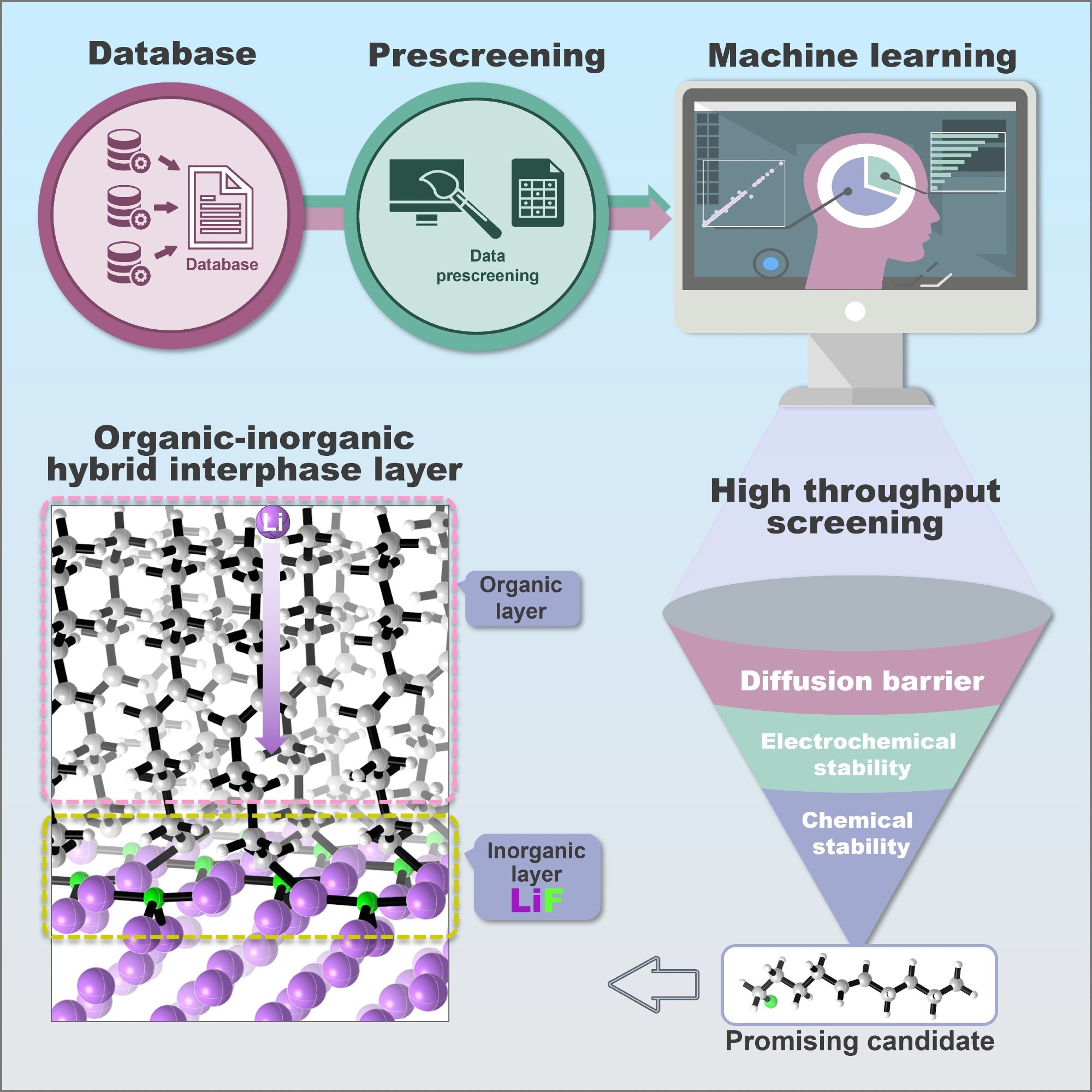Due to its promise in electronics and electric car applications, lithium metal batteries (LMBs) have received a lot of interest. However, problems like Li dendrite formation and unfavorable electrolyte side reactions during electrochemical cycling prevent their broad commercialization.
 Scheme of the inorganic-organic hybrid interphase layer strategy by self-assembled monolayers method with the aid of machine learning to accelerate material design. Image Credit: SIAT
Scheme of the inorganic-organic hybrid interphase layer strategy by self-assembled monolayers method with the aid of machine learning to accelerate material design. Image Credit: SIAT
A unique inorganic-organic hybrid interphase layer technique based on the self-assembled monolayers method has recently been presented by a research team from the Shenzhen Institute of Advanced Technology (SIAT) of the Chinese Academy of Sciences (CAS) led by Prof. Dongfeng Xue and Dr. Chao Peng. The tactic causes homogeneous Li deposition and inhibits Li dendrite formation, giving the Li metal anode surface high ionic conductivity and mechanical stability.
The findings were published in Matter on August 3rd 2023.
The high-throughput data-driven method was used by the researchers to allow the intelligent creation of self-assembled molecules. The workflow includes screening criteria for self-assembled molecule properties, electrochemical stability of molecules, chemical stability, and interphase protective layer ionic conductivity, and it can automatically collect specified self-assembled molecules from the PubChem database.
This new research paradigm streamlines the screening process for identifying the most promising candidate molecules, enabling the intelligent construction of a Li metal anode’s artificial interphase layer using machine learning techniques.
Additionally, the researchers discovered a structure-performance relationship between molecule structural characteristics (head group, tail group, and middle group) along with electronic properties and protection layer performance, with the quantum mechanical dipole and electrostatic potential of molecules recognized as crucial descriptors for predicting the energy barrier of Li diffusion through the hybrid protection layer.
They created a database of 128 self-assembled organic molecule candidates from the PubChem database and recommended the top eight molecules for generating the inorganic-organic hybrid interphase layer at the Li metal anode.
These molecules with terminated fluoride head groups (–F) allow for the formation of LiF inner inorganic interphase, which enhances the stability and ionic conductivity of the interphase layer on the Li metal anode, while the outer linear organic layer provides enriched 3D porous channels, which facilitate Li diffusion and guide Li uniform deposition while suppressing Li dendrite growth.
Our study opens up new possibilities for the development of more efficient and safer lithium metal batteries.
Dr. Chao Peng, Professor, Shenzhen Institute of Advanced Technology, Chinese Academy of Sciences
Journal Reference:
Zhang, Q., et al. (2023) Data-driven discovery and intelligent design of artificial hybrid interphase layer for stabilizing lithium-metal anode. Matter. doi:10.1016/j.matt.2023.06.010